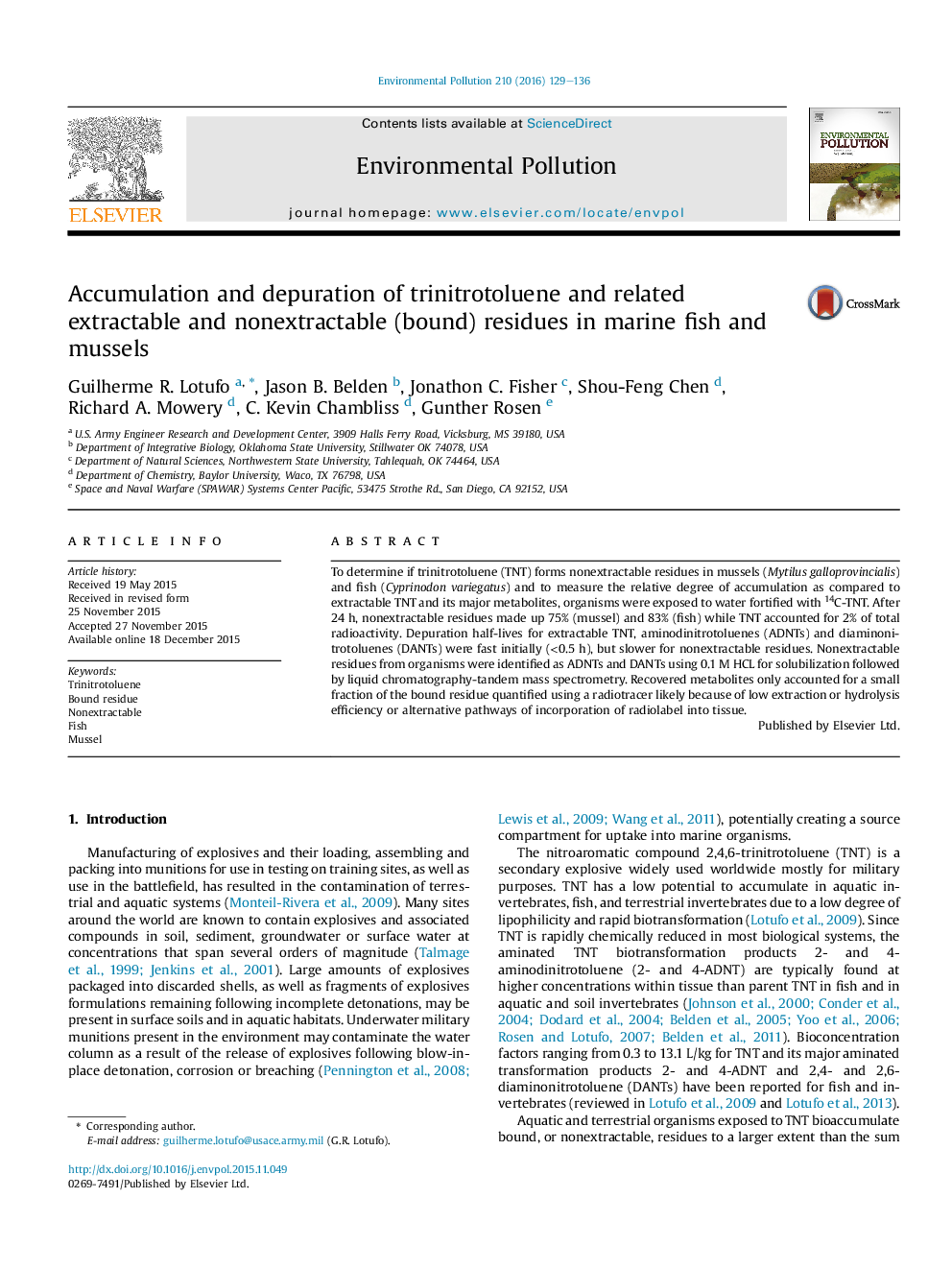| کد مقاله | کد نشریه | سال انتشار | مقاله انگلیسی | نسخه تمام متن |
|---|---|---|---|---|
| 6315085 | 1619163 | 2016 | 8 صفحه PDF | دانلود رایگان |
- We examined the bioaccumulation of TNT in Mytilus galloprovincialis and Cyprinodon variegatus.
- TNT forms nonextractable residues in mussels and fish.
- Depuration of TNT and its extractable transformation products is biphasic.
- Depuration is much slower or nonexistent for TNT nonextractable transformation products.
- Nonextractable residues were identified as aminodinitrotoluenes and diaminonitrotoluenes.
To determine if trinitrotoluene (TNT) forms nonextractable residues in mussels (Mytilus galloprovincialis) and fish (Cyprinodon variegatus) and to measure the relative degree of accumulation as compared to extractable TNT and its major metabolites, organisms were exposed to water fortified with 14C-TNT. After 24Â h, nonextractable residues made up 75% (mussel) and 83% (fish) while TNT accounted for 2% of total radioactivity. Depuration half-lives for extractable TNT, aminodinitrotoluenes (ADNTs) and diaminonitrotoluenes (DANTs) were fast initially (<0.5Â h), but slower for nonextractable residues. Nonextractable residues from organisms were identified as ADNTs and DANTs using 0.1Â M HCL for solubilization followed by liquid chromatography-tandem mass spectrometry. Recovered metabolites only accounted for a small fraction of the bound residue quantified using a radiotracer likely because of low extraction or hydrolysis efficiency or alternative pathways of incorporation of radiolabel into tissue.
Journal: Environmental Pollution - Volume 210, March 2016, Pages 129-136
